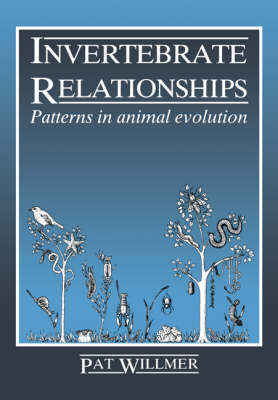
Invertebrate Relationships
Patterns in Animal Evolution
Seiten
1990
Cambridge University Press (Verlag)
978-0-521-33712-0 (ISBN)
Cambridge University Press (Verlag)
978-0-521-33712-0 (ISBN)
Phylogenetic study is an important corner-stone of biology, for the evolutionary relationships between groups of animals bear heavily on the analysis of their physiology, behaviour and ecology. Despite this, there have been few books which analyse the diversity of animal life in terms of its origins, and the relationships between different groups. In this book Pat Willmer draws on her experience of teaching invertebrate zoology to produce a stimulating account of both the relationships between invertebrate phyla and of the phylogenetic pattern of the animal kingdom. After reviewing the current state of the subject, the author discusses the various sources of evidence - structural, chemical, genetic, embryological and fossil - which bear upon the question of how living animals are related to each other. Much of this evidence has accumulated over the last two decades, yet there has been surprisingly little appreciation of the implications it has on phylogenetic research. Dr Willmer goes on to apply these lines of evidence to particular groups of invertebrates, discussing many of the classical problems of invertebrate phylogeny - the origins and relations of the lower metazoa, arthropod phylogeny, the protostome/deuterostome question, and the origin of chordates from invertebrates. The prevalence of convergent evolution is a strong theme of the book, as it becomes clear that many features, from details of cell chemistry and structure to overall body plan and life history, have been invented repeatedly and independently under similar selection pressures. This book succeeds in bringing together the previously scattered literature on invertebrate phylogeny, forming a unique introduction to this fascinating and controversial subject, and up-to-date review of invertebrate zoology.
Part I. Introduction to Animal Phylogeny: 1. Approaches to animal phylogeny; 2. Morphological patterns and traditional divisions; Part II. Sources of Evidence in Invertebrate Phylogeny: 3. Evidence from the fossil record; 4. Evidence from chemistry and genetics; 5. Evidence from embryology and larvae; 6. Evidence from cell ultrastructure; Part III. Phylogeny of Major Groups: 7. The origin of the Metazoa; 8. Acoelomates and other lowly worms; 9. The pseudocoelomates; 10. The phylogenetic position of molluscs; 11. Arthropod phylogeny; 12. The deuterostomes; 13. The Iophophorates; 14. A phylogenetic overview of invertebrates; References; Index.
| Erscheint lt. Verlag | 15.2.1990 |
|---|---|
| Zusatzinfo | Worked examples or Exercises |
| Verlagsort | Cambridge |
| Sprache | englisch |
| Maße | 174 x 249 mm |
| Gewicht | 839 g |
| Themenwelt | Naturwissenschaften ► Biologie ► Evolution |
| Naturwissenschaften ► Biologie ► Zoologie | |
| ISBN-10 | 0-521-33712-7 / 0521337127 |
| ISBN-13 | 978-0-521-33712-0 / 9780521337120 |
| Zustand | Neuware |
| Haben Sie eine Frage zum Produkt? |
Mehr entdecken
aus dem Bereich
aus dem Bereich
Wie die Vernichtung der Arten unser Überleben bedroht - Der …
Buch | Softcover (2023)
Penguin (Verlag)
15,00 €


